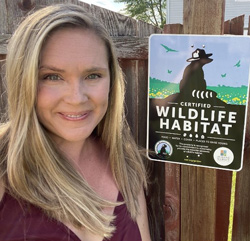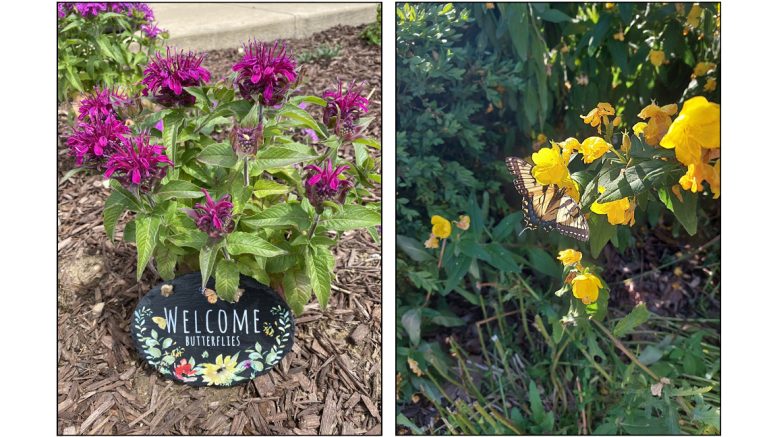By MEGAN RATHZ
When Nature Speaks
 What is it about butterflies that captivate us? They are elegant and graceful, fragile, yet striking in their beauty.
What is it about butterflies that captivate us? They are elegant and graceful, fragile, yet striking in their beauty.
There is an old saying that goes, “No garden truly blooms until butterflies have danced upon it.” A butterfly landing on your flowers and drinking sweet nectar or bathing in the sunlight provided in one’s garden is a rite of passage for a gardener. They are a reward for the fruits of labor; many believe they are a spiritual messenger sent to us by our loved ones. Whether you believe this or not, in order to have butterflies in our garden, we must provide a habitat for them.
One way to attract these creatures to your yard or balcony is planting a butterfly garden. In order to attract butterflies to your garden, one must provide food, water, shelter and protection. Butterflies are attracted to nectar from a variety of plants. They need a place to bask in the sunlight that offers protection from wind, storms, cold temperatures and predators. Butterflies like a well-developed garden with an assortment of plants offering various heights. A shallow dish of water in your garden is also essential for butterflies, such as a birdbath without a pedestal. Butterflies like to sunbathe, so a safe place for them such as a flat rock is ideal.
Aesthetics are secondary when it comes to developing a garden. Butterflies are vital pollinators in a garden, so selecting plants that will attract them and providing a sound habitat will promote them in your garden, as well as the health of your plants. Many garden nurseries will also provide information on specific flowers that attract butterflies.
An essential part of every butterfly garden are host plants for caterpillars. Each species of butterfly has a specific host plant on which a butterfly will lay her eggs. For instance, according to Indianapublicmedia.org, “Black swallowtail larvae enjoy fennel, dill, parsley, carrot or rue as host plants.”
Another popular and beloved variety is the monarch butterfly. Monarchs will only lay eggs on the host plant milkweed. Once their eggs hatch, the larvae eat the leaves before making a chrysalis and transforming into an adult butterfly.
Being familiar with some of the over 150 varieties of butterflies in our state and the variety of host plants for the individual species will encourage them to grace our gardens.
One of the most notable, yet troubled, species in Indiana is the monarch. The Indiana Wildlife Federation leads the statewide conservation efforts for the monarch butterfly. The Indiana Monarch Conservation plan was created and implemented to educate the public and raise awareness among Hoosiers. What can local gardeners do in Indiana to aid in the effort of monarch protection? Avoiding the use of harmful pesticides, planting native milkweed and spreading the words to others are indispensable components in the effort to save monarchs.
Brazilian writer Mario Quintana once said, “Don’t waste your time chasing butterflies. Mend your garden and the butterflies will come.” One does not need to create a brand-new landscape to attract butterflies. When butterflies are welcomed to your existing space filled with a variety of diverse plants and given the necessary habitat to thrive, they will come dancing.
Nature is speaking. Are you listening?


Wonderful! Looks like I need some milkweed! I have never heard of caterpillar host plants. Very informative and well-written.